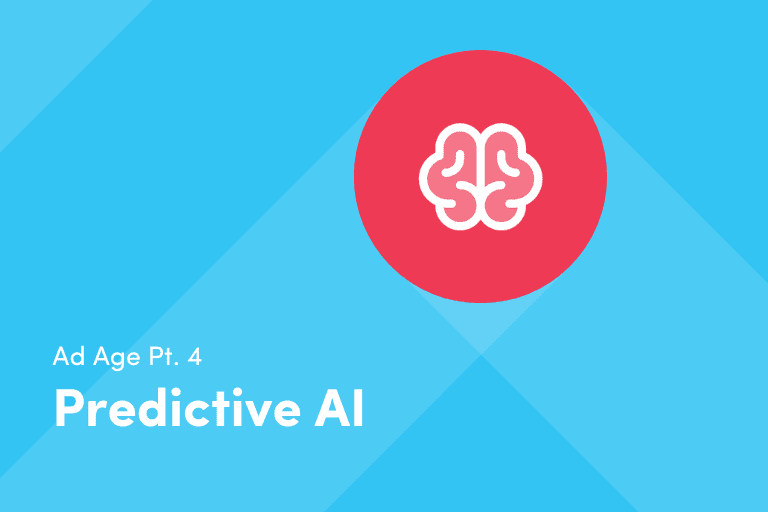It’s the fourth and final installment in our AI blog series, highlighting our recent study with Wakefield Research and Ad Age.
In case you missed it, in previous posts, we covered:
- What marketers really think about generative AI
- How AI automation and optimization impacts today’s marketers
- Why explainability and optionality are the foundation and future of all AI marketing
We’re now concluding this series with an explainer on predictive AI. Once we reveal the current state of predictive AI, we’ll share a marketing success story and how to set up your marketing campaigns for success using Iterable’s Predictive Goals.
Let’s get started.
Want even more stats about AI marketing? Head to Ad Age now to download the full study.
What is Predictive AI?
Ad Age explains that marketers have been using artificial intelligence—despite its recent hype— for predictive analytics and personalized communications for many years. It defines predictive AI as using, “machine learning-based AI models [to] churn out customer insights and help marketers predict audiences and build segments for digital campaigns.”
When asked which type of AI would make marketers’ jobs easier, survey respondents listed predictive in the top four:
- Optimization (e.g. automatically recommending improvements): 57%
- Automation (e.g. machines automatically do tasks without intervention): 53%
- Predictive (e.g. segment most likely to convert): 50%
- Generative (e.g. content creation): 49%
That said, these categories aren’t mutually exclusive, and indeed, Ad Age mentions the benefits of using them in tandem:
“When combined with predictive analytics, AI-driven automation features can help marketers strengthen customer relationships, improve brand performance and meet their KPIs in today’s fast-moving marketplace.”
To demonstrate how predictive AI can positively impact your marketing campaigns, let’s walk through a case study of the technology-powered real estate brokerage, Redfin.
How Predictive AI Works
Iterable’s Predictive Goals feature analyzes your historical data and predicts which users are most likely to convert on your business goals in the future.
We gave a brief explainer of Predictive Goals in our last post on how the platform bridges the gap between insights and actions. Diving deeper here, you can use Predictive Goals for the following use cases:
- Identifying segments of users who are likely to convert on business goals you want to optimize—like purchases and clicks—or minimize—like returns or unsubscribes.
- Identifying which of your project’s relevant user properties and first-party data you want to increase or decrease in frequency to promote desired outcomes—like sending more special offers to the users who are most likely to make multiple purchases each month.
- Generating conversion probability scores for use in journeys to direct how users interact with your brand—like creating a loyalty campaign for users with strong scores.
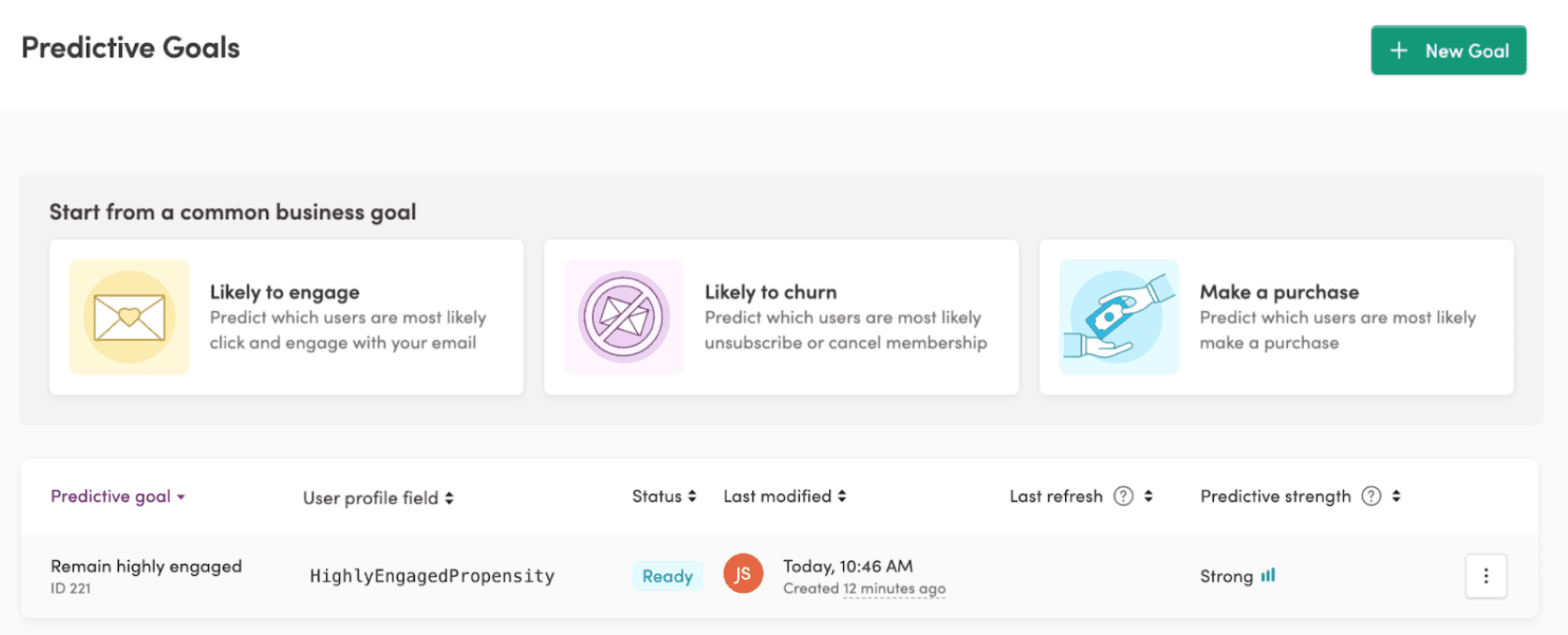

With Iterable, you can create a new predictive goal from scratch or use one of the available templates displayed in the image above.
As always with any AI model, the larger the dataset, the more effective the outcomes. We recommend at least three to six months of historical data and 100,000 unique users to achieve a meaningful forecast.
Putting Predictive Goals Into Practice
You can create up to six predictive goals with Iterable’s AI suite. To build a predictive goal, use one of the predefined templates or criteria you specify based on your particular business goals.
In the example below, your goal criteria could look for users who might add at least one item to their carts OR redeem at least one promo code, AND who have a Premium account type within a given month.
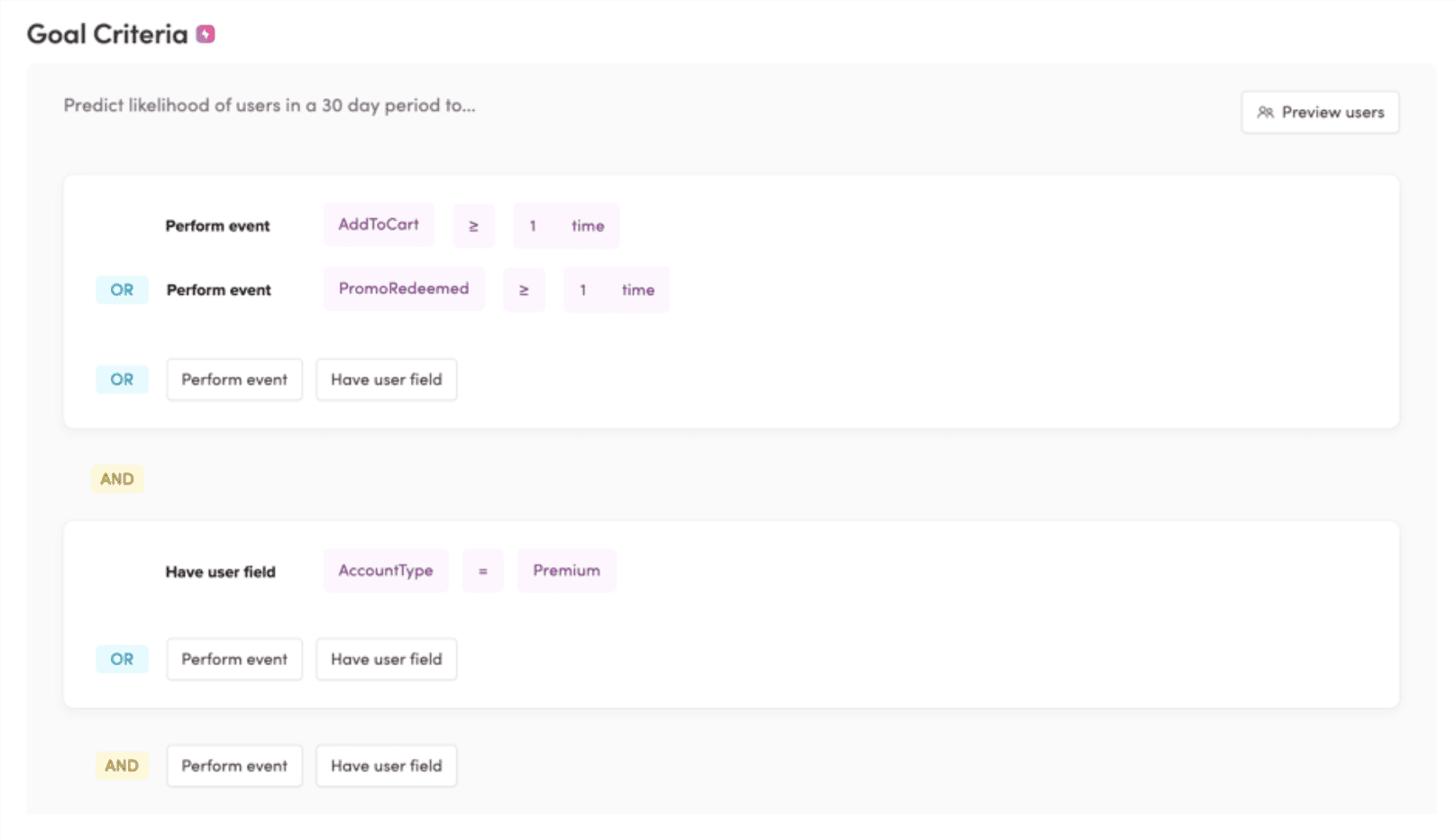

Completely customize your Predictive Goals by setting specific goal criteria relevant to your business.
Once your Predictive Goals are built, you’ll see information about how likely users are to convert on your goal from the last refresh date through a 30-day period of time. Predictive Goals don’t have an end date, but instead “roll” from one refresh to the next, so you can keep an eye out for potential trends.
The dashboard also gauges predictive strength, telling you how reliable a prediction is likely to be from a range of weak to satisfactory to strong. This predictive strength is refreshed monthly to account for recent changes to relevant project-related data.
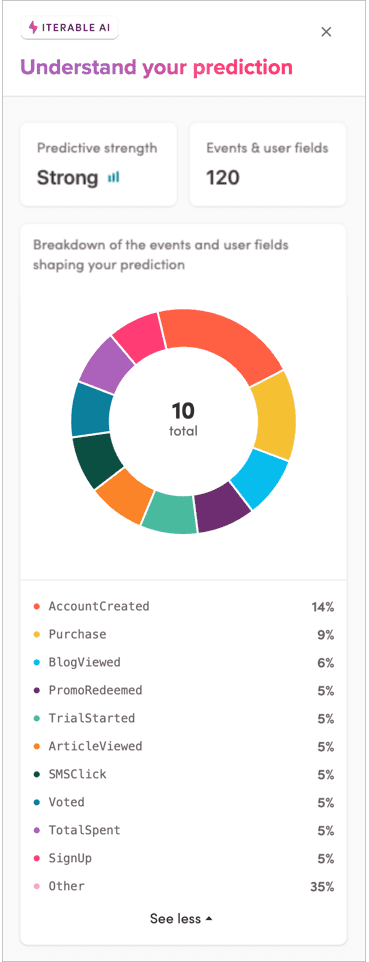

You can better understand your AI-powered predictions by evaluating each goal’s predictive strength.
There is so much to see underneath the hood of this robust feature, so be sure to check out our support articles on building and evaluating a predictive goal to learn more.
Redfin Lifts Conversions 72% With Predictive AI
Effective marketing is all about reaching people with the right message at the right time, and that’s never been truer than in real estate. With more than 50 million average monthly users across 100 markets, Redfin is the #1 real estate brokerage in the United States.
But despite its sizable audience, only a small percentage of Redfin users are active—meaning they’ve engaged with an email or visited Redfin’s website in the last 30 days. People don’t buy or sell a home frequently, so these actions are crucial early indicators that a user is ready to use Redfin’s services.
To take the guesswork and manual labor out of predicting the highest converting users, Redfin uses Predictive Goals, part of Iterable’s AI suite, to move users from inactive to active.
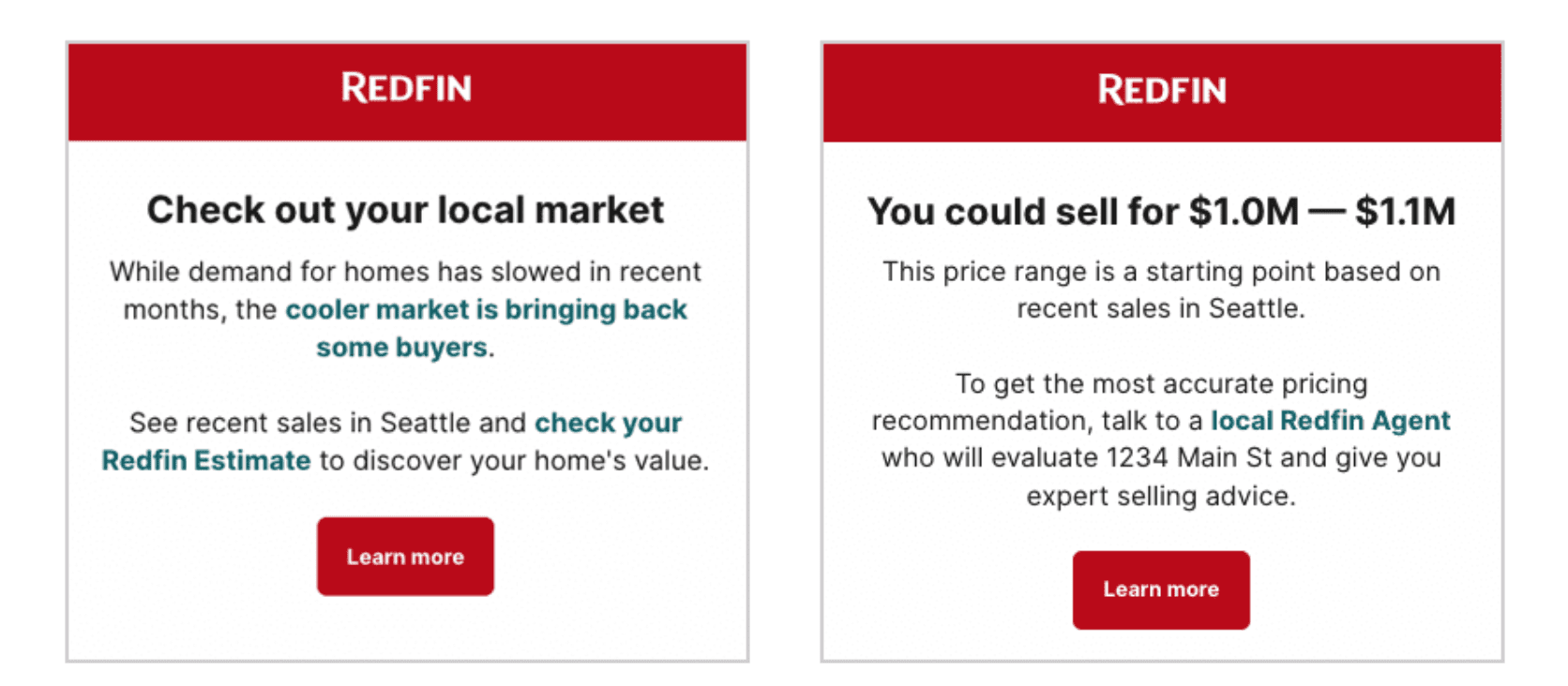

Redfin sent conversion-oriented emails like these to potential homebuyers and sellers, identified by Iterable’s Predictive Goals as having the highest likelihood to convert.
The retention marketing team at Redfin used holdout groups to determine the incremental difference that Predictive Goals made on conversions. Then they sent conversion-oriented emails to both Predictive Goals homebuyers and sellers, achieving significant results:
- A 72% lift in converting inactive sellers to an active state
- A 15% lift in converting inactive buyer to an active state
- A directionally positive lift in seller consultations and tours booked by buyers
Notably, with Iterable’s more predictive insights, the marketing team has the information they need to act quickly, with minimal-to-no support from engineering. The platform allows them to be creative and experiment with all their customer data at their fingertips.
Lisa Tulloch, Email Marketing Channel Manager at Redfin, spoke to the power of predictive AI:
“Predictive Goals has been an absolute game-changer for our team, maximizing our efficiencies and accelerating time to value. We’ve seen the tangible benefits of AI on our business, and look forward to seeing the impact of Iterable’s new AI innovations.”
Not to mention, you don’t have to be one of the largest real estate marketplaces to experience the value of predictive AI. Let’s now see predictive AI in action by walking through how a brand can set up its own Predictive Goals using Iterable.
We Predict Knockout Marketing Campaigns in Your Future
AI technology is only getting better and more sophisticated, so if you want your marketing campaigns to be at the forefront of innovation, download the full Ad Age report for even more stats and insights on AI tools.
And if you’re curious to see what predictive AI can do for your brand, we’re here to help.
Want to get started building business-specific predictive goals? Reach out and schedule a custom demo of Iterable AI today.































